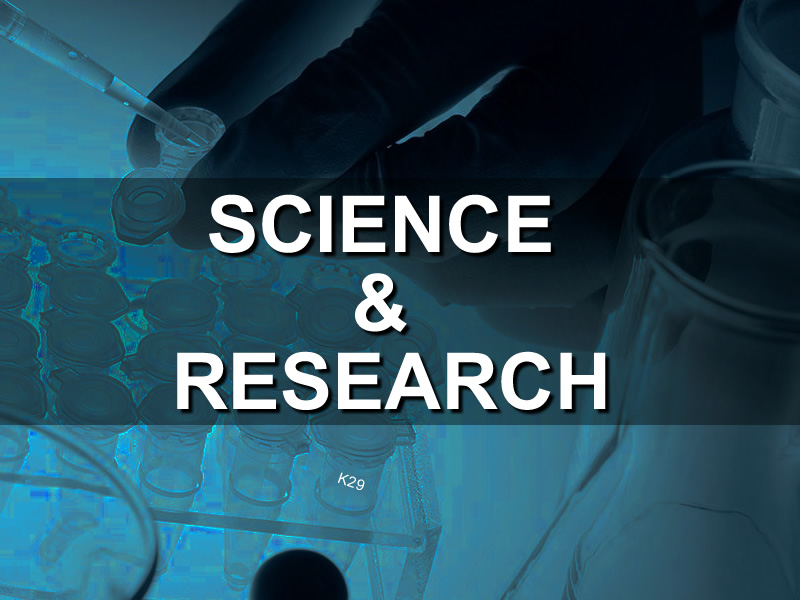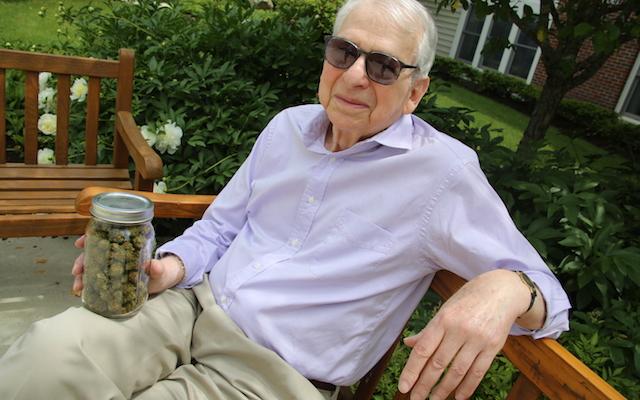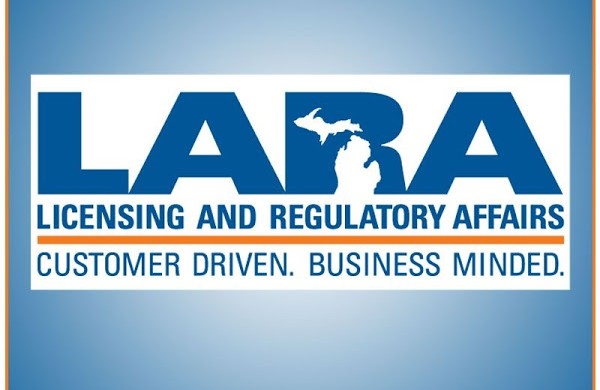
Jul 10, 2018 | Blog, Cannabis Science, Health Benefits of Marijuana, Medical Marijuana
8 Cannabinoid Acids Produced by Cannabis
Cannabis produces a variety cannabinoid compounds many of which have not been detected in any other plant.
Most of them are present at very low levels, especially in commercial cannabis products, making it difficult for scientists to accurately detect them.
Cannabis synthesizes several cannabinoid acids . These acids are created, usually by heat, to yield the compounds that most are after (THC or CBD). But in addition to THCA and CBDA, there are number of related cannabinoids that can be produced by Cannabis.
These are:
Click the item to read in depth detail from the .gov chemical database.

Jun 26, 2018 | Blog, Health Benefits of Marijuana, Hemp
June 26, 2018
DEA to hopefully change CBD scheduling within 90 days.
The US Food and Drug Administration announced Monday June 25, 2018 the approval of the first cannabis based prescription medication.
The medicine is called Epidiolex and is a plant-derived oral solution of cannabidiol (CBD). CBD is a chemical component of marijuana that does not cause intoxication or a euphoric high. The London based GW Pharmaceuticals plc, is expecting another significant decision where the US Drug Enforcement Administration (DEA) reclassifies CBD.
This could unlock the opportunity to other marijuana-derived medications as well as ease restrictions on other cannabis research.
Read the entire article here

Dec 1, 2016 | Health Benefits of Marijuana, Medical Marijuana, Uncategorized
A new study adds to the evidence that letting patients use cannabis saves lives by reducing consumption of pharmaceuticals.
Insys Therapeutics, the Arizona-based pharmaceutical company that recently became the biggest financial supporter of the campaign against marijuana legalization in that state, makes an oral spray that delivers the opioid painkiller fentanyl and plans to market another one that contains dronabinol, a synthetic version of THC. Insys says it gave $500,000 to the main group opposing Arizona’s legalization initiative because the measure “fails to protect the safety of Arizona’s citizens, and particularly its children.” But one needn’t be terribly cynical to surmise that Insys also worries about the impact that legalization might have on its bottom line, since marijuana could compete with its products.
A new study suggests Insys has good reason to worry. In an article published last week by the American Journal of Public Health, Columbia University epidemiologist June Kim and her colleagues report that fatally injured drivers are less likely to test positive for opioids in states that allow medical use of marijuana. That finding, together with the results of earlier studies, indicates that making marijuana legally available to patients saves lives by reducing their consumption of more dangerous medications.
Kim et al. collected data from the Fatality Analysis Reporting System (FARS) for 1999 through 2013, focusing on 18 states that drug-tested at least 80% of drivers who died in crashes. They found that drivers between the ages of 21 and 40 were half as likely to test positive for opioids in states that had implemented medical marijuana laws (MMLs) as in states that had not.
“Among 21-to-40-year-old deceased drivers, crashing in states with an operational MML was associated with lower odds of testing positive for opioids than crashing in MML states before these laws were operational,” the researchers write. “Although we found a significant association only among drivers aged 21 to 40 years, the age specificity of this finding coheres with what we know about MMLs: a minimum age requirement restricts access to medical marijuana for most patients younger than 21 years, and most surveyed medical marijuana patients are younger than 45 years.”
The fact that a driver tested positive for opioids does not necessarily mean the painkillers he took contributed to the crash, so it is not safe to draw any conclusions about medical marijuana’s impact on traffic safety from this study. But the FARS data are an indirect way of measuring the extent of opioid consumption in a given state. Kim et al. note that “severe or chronic pain is among the most common indications cited by medical marijuana patients.” It therefore makes sense that opioid use would decline (or rise less) in states that recognize cannabis as a medicine.
The FARS numbers reinforce the results of another recent study, published last July in the journal Health Affairs, that looked at prescriptions covered by Medicare from 2010 through 2013. Ashley Bradford, a graduate student in public policy at the University of Georgia, and her father, W. David Bradford, an economist at the same school, found that “the use of prescription drugs for which marijuana could serve as a clinical alternative fell significantly once a medical marijuana law was implemented.”
The most dramatic decline was in painkiller prescriptions, which fell by 3,645 daily doses per physician after medical marijuana laws were implemented. There were also statistically significant drops in prescriptions for drugs used to treat seizures (down 1,370 daily doses per doctor), depression (1,280), psychosis (1,123), anxiety (1,106), nausea (1,028), and sleep disorders (615). Meanwhile, Bradford and Bradford “found no changes after implementation of a medical marijuana law in the number of daily doses filled in condition categories with no medical marijuana indication,” which “provides strong evidence that the observed shifts in prescribing patterns were in fact due to the passage of the medical marijuana laws.”
Medicare prescription drug coverage is mainly available to people who are 65 or older, although people receiving federal disability payments also can qualify. Bradford and Bradford note that “previous studies have suggested that Medicare patients may make up a relatively small percentage of people who use medical marijuana and that only 13–27 percent of people who used medical marijuana were ages fifty and older.” But Kim et al.’s analysis of FARS data suggests a similar shift to cannabis from other medications is occurring among 21-to-40-year-olds, who account for the bulk of medical marijuana users.
Other studies indicate that replacing prescription drugs with marijuana reduces opioid-related deaths. A 2014 study reported in JAMA Internal Medicine, based on death certificate data from 1999 through 2010, found that “states with medical cannabis laws had a 24.8% lower mean annual opioid overdose mortality rate…compared with states without medical cannabis laws.” Furthermore, internist Marcus Bachhuber and his co-authors reported, “such laws were associated with a lower rate of overdose mortality that generally strengthened over time,” which makes sense if more patients are switching to marijuana from opioids (or choosing marijuana rather than opioids) each year.
JAMA Internal Medicine
The reduced rate of opioid-related fatalities translated into about 1,700 fewer deaths in 2010 alone. The researchers suggest several possible explanations for this effect. “Patients with chronic noncancer pain who would have otherwise initiated opioid analgesics may choose medical cannabis instead,” Bachhuber et al. write. “In addition, patients already receiving opioid analgesics who start medical cannabis treatment may experience improved analgesia and decrease their opioid dose, thus potentially decreasing their dose-dependent risk of overdose. Finally, if medical cannabis laws lead to decreases in polypharmacy—particularly with benzodiazepines—in people taking opioid analgesics, overdose risk would be decreased.”
That last possibility could be more significant than you might think, since opioid-related deaths typically involve mixtures with other drugs, with benzodiazepines playing a substantial and increasing role. Bradford and Bradford found that medical marijuana laws were associated with decreases in prescriptions for drugs used to treat anxiety and sleep disorders. Benzodiazepines are commonly used for both purposes.
A working paper published last year by the National Bureau of Economic Research confirmed that the legal availability of medical marijuana is associated with a relative decline in opioid-related deaths. RAND Corporation researcher David Powell and two colleagues extended Bachhuber et al.’s analysis by including three more years of data. They also looked at drug treatment admissions related to opioids and found that they became less common in states that implemented medical marijuana laws.
“We find fairly strong evidence…that states providing legal access to marijuana through dispensaries experience lower treatment admissions for addiction to pain medications,” Powell et al. write. “We provide complementary evidence that dispensary provisions also reduced deaths due to opioid overdoses….Our findings suggest that providing broader access to medical marijuana may have the potential benefit of reducing abuse of highly addictive painkillers.” Like Bachhuber et al., they found that the longer medical marijuana was legally available, the bigger the apparent benefit.
Even while sounding the alarm about an “opioid epidemic” that included a record number of painkiller-related deaths in 2014, the federal government insists marijuana has “no currently accepted medical use.” Judging from these studies, its dogmatism may be deadly.
This article originally appeared at Forbes.com.

Oct 3, 2016 | Blog, Health Benefits of Marijuana, Michigan Medical Marijuana Act, News
An advisory panel is recommending not to add an eye disease that qualify for medical marijuana in Michigan.
The petition was filed by Melba Velez Ortiz, a professor at Grand Valley State University. She would like to add retinitis pigmentosa to the list of ailments to qualify for medical marijuana use.
It’s an inherited disease that affects the retina and can possibly lead to night blindness and loss of vision. Ortiz claims there’s research showing marijuana can slow the progress of the disease.
Just one of six members on the review panel was in favor.

Mar 23, 2016 | Health Benefits of Marijuana, Medical Marijuana, Planet Green Trees Radio
It’s a popular theme in marijuana use – the “entourage effect.” It’s defined as the broad-spectrum sense of wellness derived from consuming an unaltered or concentrated form of cannabis. All the natural chemicals found in cannabis are ingested simultaneously.
Any single chemical in isolation does not perform in the same way that a substance will when associated with other chemicals found in the original, natural source. The three primary components of the marijuana chemical cocktail include CBD, THC and the phytocannabinoid group of terpenoids.
CBD by itself performs different than CBD in conjunction with THC, and both perform differently when in the presence of terpenoids. Marijuana’s strength and effect varies by strain based on the ratio of these three components, among other factors.
“It’s a mixture of CBD, cannabidiol, THC and the phytochemicals, the terpenoids,” says Harvard Professor, Dr. Lester Grinspoon. “You need all three of them to get the best therapeutic effect.”
But Dr. Grinspoon says that he entourage effect, the broad-based experience cannabis users have when they consume marijuana containing all three components, is improperly named, Grinspoon told listeners of the Planet Green Trees Radio Show on Thursday, March 10. He prefers the term “therapeutic ensemble.”
“I think that the ensemble is a better idea than entourage, because the word ‘entourage’ implies one item moving in this direction – and it has company,” Dr. Grinspoon explained, “and it is [the item] that is responsible for that activity, and the others just go along. That’s entourage.
“The word ‘ensemble’” he continued, “means that these are the three things that are required for the best therapeutic effect, but you can manipulate the percentage of two of them.”
Those are THC and CBD, Dr. Grinspoon stated. “The phytochemicals, the terpenoids, they come with it, as long as it is derived from the bud, from the plant and not from some oil where all the phytochemicals have been distilled out. As long as you are getting it from the bud you can manipulate by mixing strains.”
Dr. Grinspoon illustrated the advantage of the therapeutic ensemble, and the effect seen when it is absent: “Cannabidiol is a non-psychoactive cannabinoid, which in fact opposes tetrahydrocannabinol, the psychoactive. If you take a large dose of CBD for therapy during the day and you try to use THC at night you won’t get high. On the other hand, you can make the THC high compared to the CBD, the ratio is reversed, and you will get a high. As long as you have the two of them, and the phytochemicals, the terpenoids, you will get a therapeutic effect.”
Charlotte’s Web, a strain of cannabis known for its high CBD and low THC ratio, was cited by Dr. Grinspoon as an example of plant manipulation to express effect. “People can use [that strain] for therapeutic utility and they won’t get high, and that’s great. On the other hand, there are some people who like to have more THC in it so they get somewhat of a high, because high equals antidepressant for some people and that is very important.”
The therapeutic ensemble is the key to maximizing medicinal effect. “In the world of the future we’re gonna have this therapeutic ensemble. You’ll be able to go into the medical store… and you can get a mix where you get the right ratio of cannabidiol to THC,” Dr. Grinspoon opined. “As long as that has terpenoids with it, it will be therapeutic.”
Advances in marijuana testing are making medicinal cannabis use more user-friendly by identifying the product’s ratio of components. Patients can look past flashy names to find medicine that will deliver consistent, predictable effects. “It will be very easy for [medical marijuana patients] to pick it out because it isn’t the name of the strain; it’s how much of these three constituents the marijuana-based medicine contains,” Dr. Grinspoon said.
One group that could benefit from this kind of targeted therapy: veterans. “PTSD is very responsive to cannabis,” Dr. Grinspoon related to PGT host, attorney Michael Komorn.
Dr. Grinspoon is a pioneer in marijuana science. During the interview he discussed some of his earliest experiences with marijuana and how they were influenced – some might say, peer-pressured – by a young Carl Sagan.

Rick Thompson
By Rick Thompson · Thu Mar 17, 2016
Listen to the entire interview with Dr.Grinspoon on Planet Green Trees here.

Oct 7, 2015 | Cannabis Science, Health Benefits of Marijuana, Medical Marijuana, News
Michigan Panel Votes 4-2 In Support Of Cannabis Use For Children With Autism, LARA Director Denies Petition.
Mike Zimmer, the Director of LARA in Michigan, has taken the futures of children and their families into his hands, only to crush them, insult them, and put all of their lives in danger. I was in attendance on July 31st 2015 at the last autism hearing in Lansing when the panel was finally given the chance to make an informed vote of 4-2 in favor of Autism being added to the list of qualifying conditions for medical marijuana.
I held our 4-year-old son Emery affectionately in my arms as I spoke in front of the panel of our experience over the last year and how it has changed us. We are able to give Emery cannabis because of his epilepsy diagnosis. I explained what it has done to reverse his autism impairment, to help him grow and to be happy, and for us to be able to live together in the same home. Before cannabis, we were going to have to live in separate homes on the same farmland together. Emery could not help but attack everyone around him constantly, including his younger siblings. Now, we happily spend entire days together and can hardly imagine the road we were headed down before Emery’s brain was allowed to work the way it is meant to because of cannabis.
We were at the hearing with other friends as well. These friends have been fighting this for over two years. They are parents, family, friends, attorneys, doctors, experts, and other activists. Parents with adult autistic children spoke to the panel as well. These parents have spent decades watching their children suffer as they refill endless bottles of dangerous pharmaceutical medications. They explained that from all of their research and everything they have seen, they believe that cannabis will work. They want to try it.
Parents like Dwight Zahringer have seen that other children using cannabis are not only experiencing changes in behavior and sleep patterns, but are also becoming verbal for the first time. Like every parent, these are things that he wants deeply for his own son, who is mostly non-verbal at the age of three. The original petitioner Lisa Smith’s son Noah, who has been non-verbal his whole life, has just recently started talking at the age of six because of cannabis. Parents caring for children with an autism diagnosis shouldn’t have to wait another day to try a proven safe and effective medicine that is non-toxic and has never caused a death. This is especially true when it’s helping so many people already.
Mike Zimmer denied the petition despite the panel’s recommendation to add it to the qualifying list of conditions.
The panel is specifically designated by LARA to make the decisions regarding new conditions that should qualify for protection under the MMMA. They reviewed over seventy-five peer-reviewed articles with over eight hundred pages of scientific information relating to the paediatric use of cannabis for autism. Parents should be able to choose this medicine for their autistic children. Adults who are suffering should be able to qualify as well. But instead of passing this decision through so that families can finally find relief, healing, and new positive experiences, Mike Zimmer denied it. From the decision:
“This lack of scientific evidence is concerning … the petition fails to acknowledge the direct impact on children… .”
And Lt. Governor Brian Calley, who has an autistic child of his own, weighed in by saying “there are neither sufficient studies nor scientific trials demonstrating its clinical impact to justify approval at this time.”
Maybe what these guys need is over eight hundred pages of information on the dangers of using anti-psychotics, anti-depressants, anti-insomnia, and anti-anxiety medications on children just to help them cope or to control dangerous behaviors.
Zimmer writes that children with autism “without associated seizure disorders” are already eligible under the language of the MMMA. He implies that if there are no seizures, then the autism is not severe, with no clear definition for what severe autism is.
Let’s help him with that: autism is a word with six letters. That’s it. But children with an autism diagnosis, whether it is considered severe or not, have to see doctors to get that diagnosis. And there are reasons for seeing the doctors. Parents can’t just walk into a dispensary and get an autism diagnosis and a medical card. Children with these conditions have a neurologist and sometimes many other doctors that they see regularly to monitor their growth, behaviors, and intelligence. It feels like what Mike Zimmer is really saying is that he doesn’t trust the many compassionate doctors, attorneys, parents, experts, social workers and other professionals who work in this field. These are the people who spend time with autistic children and their families.
They support this petition. Yet, he feels he has the right to make this decision for all of us.
He does not have that right.
He does not have the right to put a time limit on the lives of people or to force parents to separate siblings from each other when they can grow up together as friends, happily and peacefully. He doesn’t have the right to choose the number of children that are allowed to thrive and succeed in this world. In his Final Determination letter, he even makes it a point to rebut the claims that adding autism would cause a minimal increase in participation among minors.
276608146-Lara-Final-Determination-Medical-Marijuana-Autism
Attorney Michael Komorn suggests:
This guy is the head of LARA, the agency that licenses these physicians, and he relies upon the argument that the doctors that we license can’t be trusted and will abuse the system. To follow his logic, his licensed physicians will treat autistic patients who they are not qualified to treat … The solution is that he can regulate this through the physicians and lay down rules and regulations. Instead he shuts it down.
None of this matters, of course. Every child with an autism diagnosis will benefit from using cannabis. This is clearly outlined in all of the peer-reviewed information that was included with the petition even aside from the hundreds, if not thousands, of miraculous stories from all across the country. These are stories of autism impairment being reversed, sometimes seemingly overnight, just from using low doses of cannabis oil or other forms of cannabis. Let’s make sure these people have all the information they need to make this right for us!
THIS IS A CALL FOR ACTION!
California and D.C parents can already treat their children with cannabis for autism. This fight has been going on in Michigan for long enough now that a lot of people far and away are paying attention. When autism is added to the list of qualifying conditions in Michigan, our children will literally become the long-term studies that Mike Zimmer and other opponents of the petition claim that we need to have first.
Please take a few minutes out of your day and call LARA and the Governor’s office, or send out some emails or faxes. It really does mean a lot to everyone who works hard on this. It could make a huge difference in the outcome and aftermath of Zimmer’s final determination letter, which is included in the article. If you have any creative ideas or information that you feel could help, please tell us about it. Some websites that you can contact are listed below. If you have a success story you want to share, feel free to share in the comments below as well. This might be a game to these politicians and profiteers, but these are our lives! We deserve to create them ourselves!
Here is the contact information for Mike Zimmer, Brian Calley, and the Governor’s Office. Please help these guys understand!
Brian Calley
https://www.facebook.com/briancalley
(Governor’s Office)
PHONE: (517) 373-3400
PHONE: (517) 335-7858 – Constituent Services
FAX:(517) 335-6863
Mike Zimmer
Phone: (517) 373-3286
Email: zimmerm@michigan.gov
Licensing and Regulatory Affairs
P.O. Box 30004
Lansing, MI 48909
Phone: (517) 373-1820
Fax: (517) 373-2129
This is a link to “The Endocannabinoid System as it Relates to Autism” – Joe Stone; Christian Bogner, M.D. Its references list the peer-reviewed scientific articles relating to cannabis in the treatment of autism that were included in the petition to add autism to the list of qualifying conditions to use cannabis in Michigan:
The Endocannabinoid System as it Relates to Autism
http://www.collective-evolution.com/2015/10/06/michigan-panel-votes-4-2-in-support-of-cannabis-use-for-children-with-autism-lara-director-denies-petition/







